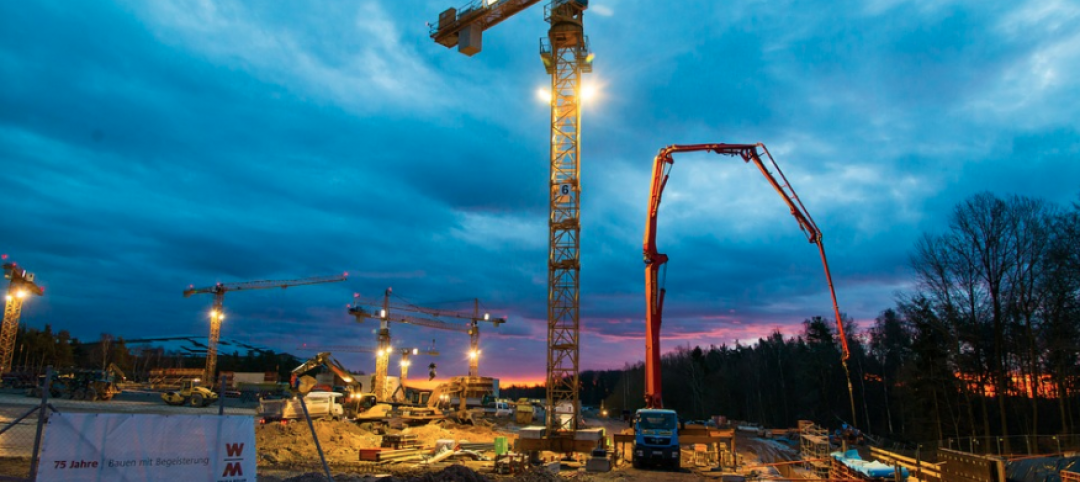A record-high number of candidates—37,178 at the end of 2014—were actively working toward an architect license required by the 54 state and jurisdiction licensing boards across the country.
It is common for candidates to be described, in the press or by many jurisdictions, as “intern-architects” or “architects in training,” or by some other nomenclature that might confer a false level of expertise or legal status.
The National Council of Architectural Regulation Boards (NCARB) wants to change that. Following the recommendations of a Future Title Task Force it formed last year, NCARB is embarking on an initiative that would “sunset” the term “intern” for those who are on a training or testing path to become architects.
NCARB is taking steps to erase “intern” from its internal lexicon, according to CEO Michael Armstrong. It plans to remove the word from its communications and correspondences. As an example, someone registered for the Architect Registration Examination “is an ARE candidate,” he said.
NCARB officials made this announcement during the American Institute of Architects’ (AIA) Convention 2015 Expo in Atlanta last week.
This debate isn’t new. “This issue has been fraught with controversy,” said Dale McKinney, FAIA, NCARB’s President. “We know that in the last several years, concerns have been raised regarding the credibility of the term ‘intern.’”
That’s not surprising, given the sheer number of architect candidates out there. In its “NCARB By The Numbers” report, which it will formally release in July, the Council estimates that nearly 10,000 new candidates had started on the path to licensure in 2014, 4% more than the previous year. The number of candidates who had completed the Architect Registration Exam was up 17% to 3,719.
The Task Force, chaired by McKinney’s immediate predecessor, Blake Dunn, considered several factors, particularly the regulatory impacts of extending the title “architect” beyond the licensed community. The Task Force recommended that:
• The role of regulation should be restricted to the title “architect,” which should be applied only to licensed individuals;
• Any other title held by those pursuing a license does not need to be regulated.
• NCARB should discontinue the use of the work intern, intern-architect, “or any other regulatory ‘title’ described those pursing licensure.”
(In April, NCARB’s board of directors voted unanimously to accept the Task Force report, which also determined that the term “architect emeritus” is acceptable because those people described as such, while they may not be practicing, still have obtained their license.)
NCARB is taking steps to erase “intern” from its internal lexicon, according to CEO Michael Armstrong. It plans to remove the word from its communications and correspondences. As an example, someone registered for the Architect Registration Examination “is an ARE candidate,” he said. “A person recording experience hours is a Record holder.” The Council is renaming its Internship + Education Directorate with the new title Experience + Education Department, or E2. And it is likely that its Intern Development Program—which the Council recently streamlined and overhauled—will be renamed.
Dennis Ward, AIA, who becomes the Council’s president on June 21, pointed out that 30 jurisdictions or licensing boards currently reference one or more titles that include the word intern or “architect in training.”
With its announcements, NCARB, said Armstrong, is asserting “our role as an advisory organization. We’re putting down a leadership marker.” But he and McKinney were quick to note that proposals to change the Council’s Model Law or regulations would need to be presented by delegates of the state licensing boards. The earliest such proposals could be presented for comment would be next Spring, and for a vote of the Membership at the Council’s Annual Business Meeting scheduled for Seattle in June 2016.
During its press conference at the AIA Expo, NCARB stated that U.S. licensing boards reported 107,581 licensed architects at the end of 2014, representing the third consecutive year of increased growth in the profession.
Related Stories
Sports and Recreational Facilities | Jan 25, 2018
Virginia Beach: A surf town with a wave problem no more
A world-class surf park will highlight Virginia Beach’s new live-work-play development.
Multifamily Housing | Jan 24, 2018
Apartment rent rates jump 2.5% in 2017, led by small and mid-sized markets
The average price for one-bedroom units increased the most.
Architects | Jan 24, 2018
Danish design firm Schmidt Hammer Lassen Architects joins Perkins+Will
Partnership expands Schmidt Hammer Lassen’s capacity for international growth; complements Perkins+Will’s design philosophy and strengthens the firm’s cultural practice.
Hotel Facilities | Jan 24, 2018
U.S. hotel markets with the largest construction pipelines
Dallas, Houston, and New York lead the way, with more than 460 hotel projects in the works.
Architects | Jan 24, 2018
Strong finish for architecture billings in 2017
The Architecture Billings Index concluded the year in positive terrain, with the December reading capping off three straight months of growth in design billings.
Architects | Jan 19, 2018
CTBUH announces global finalist projects for annual awards program
The Lotte World Tower, in Seoul, and 150 N. Riverside, in Chicago, are among the finalists.
Architects | Jan 10, 2018
NELSON and FRCH Design Worldwide are merging
Their chief executives will manage the company jointly, by region.
Architects | Jan 10, 2018
7 steps to ending a low growth cycle
Here are the top 10 marketing techniques as rated by high-growth firms and how they compare to their no-growth counterparts.
Architects | Jan 8, 2018
ZGF Founding Partner Robert Frasca, 84, passes away
Frasca was a driving force in transforming the architectural firm from its early beginnings as a regional office into one of the nation’s largest practices, with 600 design professionals across six offices in the U.S. and Canada.
















